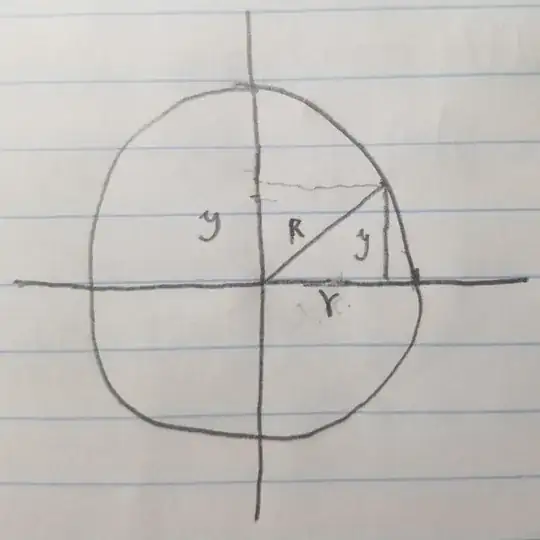Suppose a sphere with radius R is centered at the origin, whose cross section is as follows (R is the constant radius while r is variable): then its volume can be easily calculated:
then its volume can be easily calculated:
$V=\int_{-R}^{R}\pi r^2 dy = \int_{-R}^{R}\pi (R^2-y^2) dy = \cfrac{4 \pi R^3} {3}$
This can be intuitively understood as summing up thin cylinders with base radius $r$ and height $dy$. However, if I try to do find the surface area by doing something similar: sum up rings with radius $r$ and thickness $dy$, I end up with
$A=\int_{-R}^{R} 2 \pi r dy=\int_{-R}^{R} 2 \pi \sqrt{R^2-y^2} dy = \pi^2 R^2$
which is completely wrong. Why is that the same approach works for deriving the volume formula while results in a wrong answer for surface area? Can this approach be modified to make it work for surface area? Thanks!